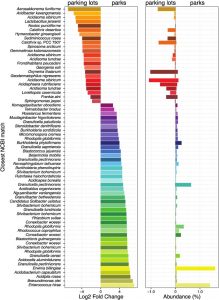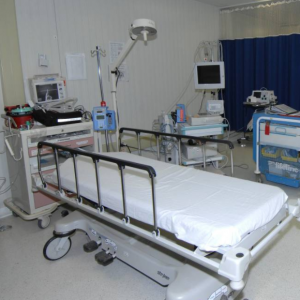A recent open access paper from the BioBE Center at University of Oregon explored the differences between airborne bacteria collected in parks and parking lots. Entitled “Urban greenness influences airborne bacterial community composition” and published in Science of the Total Environment, this interdisciplinary study combined research methods from microbiology and landscape architecture to answer the …
Quick post – paper of interest: Urban greenness influences airborne bacterial community composition Abstract Urban green space provides health benefits for city dwellers, and new evidence suggests that microorganisms associated with soil and vegetation could play a role. While airborne microorganisms are ubiquitous in urban areas, the influence of nearby vegetation on airborne microbial communities …
You’ve probably heard that the ocean is full of plastic. Here is a guest post about a current crowdfunding campaign to explore the microbes that colonize plastic. Professor Ana Maria Barral from National University (http://www.nu.edu/), a private non-profit in California has launched a crowdfunding campaign to support a recently started project to explore the microbes …
microBE.net is an awesome name, so I wasn’t that surprised to find that the CDC has it’s own MicrobeNet that they launched in 2013. MicrobeNet is a free online curated database of emerging bacteria and fungi that aims to improve reference diagnostics and pathogen identification. The database includes genetic sequence data (16S rRNA), biochemical data, morphological characteristics and antibiotic resistance profiles for about 2,400 species, as well …
An open access article entitled “Evaluation of disinfection efficiency in pet’s hospital by using chlorine dioxide” was recently published in Sustainable Environment Research. In this study, the authors investigated the efficacy of chlorine dioxide in reducing the concentration of bacteria and fungi in bioaerosols in an animal hospital. Chlorine dioxide is an effective disinfectant commonly …
I have nothing to add to this. The Onion picks up on the recent study by Caporaso and colleagues A study that swabbed office buildings in major cities found that the bacterial profile of the swabs corresponded to their location, suggesting that cities each have their own “bacterial fingerprint.” What do you think? Source: Study: …
So – I am teaching in BIS002C – Biodiversity and the Tree of Life again at UC Davis. And I thought it might be of interest to share (and get feedback on) some of what I am teaching for this course. Quick summary – this is the third course in an Intro Bio series …
An artist named Joana Ricou has teamed up with microbiologists to create really awesome portraits of bacterial cultures of belly button microbes. There are more than 400 portraits and they are on display at the Art Laboratory Berlin as part of the exhibit Nonhuman Subjectivities.
Here is another nice paper about microbes degrading human buildings. I guess I am just fascinated by that topic! No matter what we build, microbes will find a way in or on, and will start chewing on things. This paper by a group of Austrian researchers came out a couple of days ago in PLOS …
Here are my notes from day 3 of the Mothur Workshop that is taught by Pat Schloss (pdschloss at gmail.com) at a hotel that is conveniently located near the Detroit airport. Of all of the bioinformatic workshops I have attended, this group of students was my favorite so far. We had a lot of fun …



